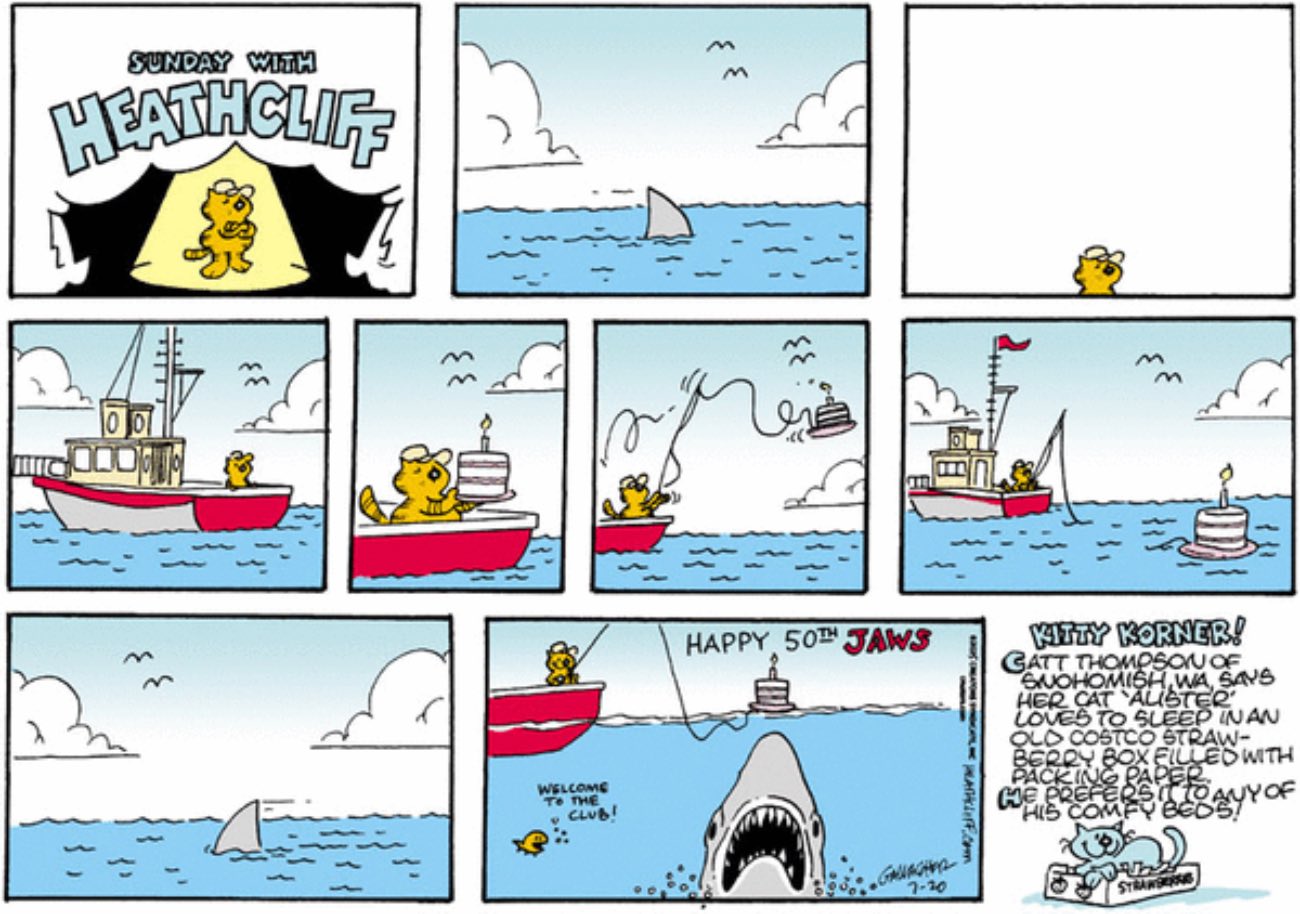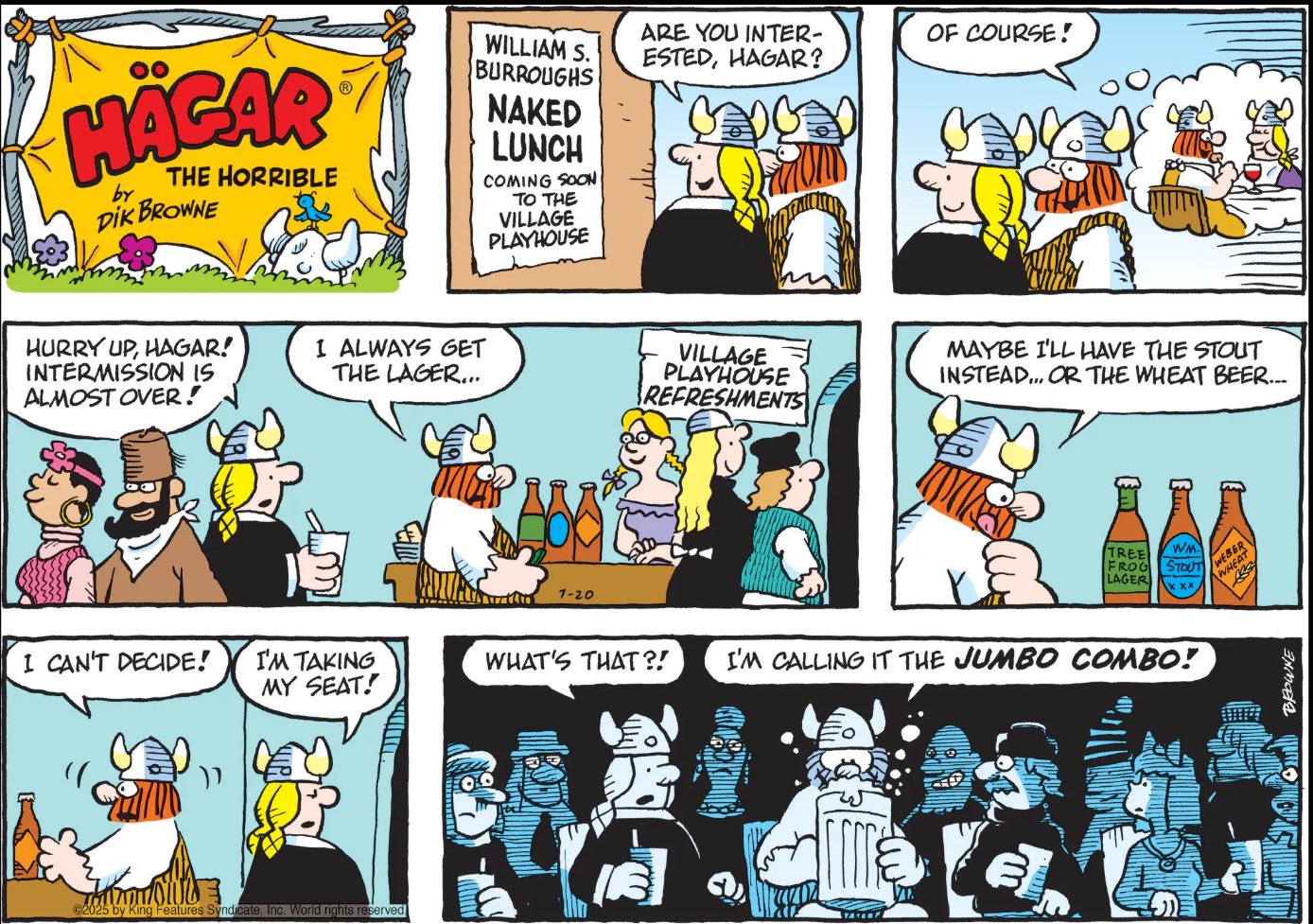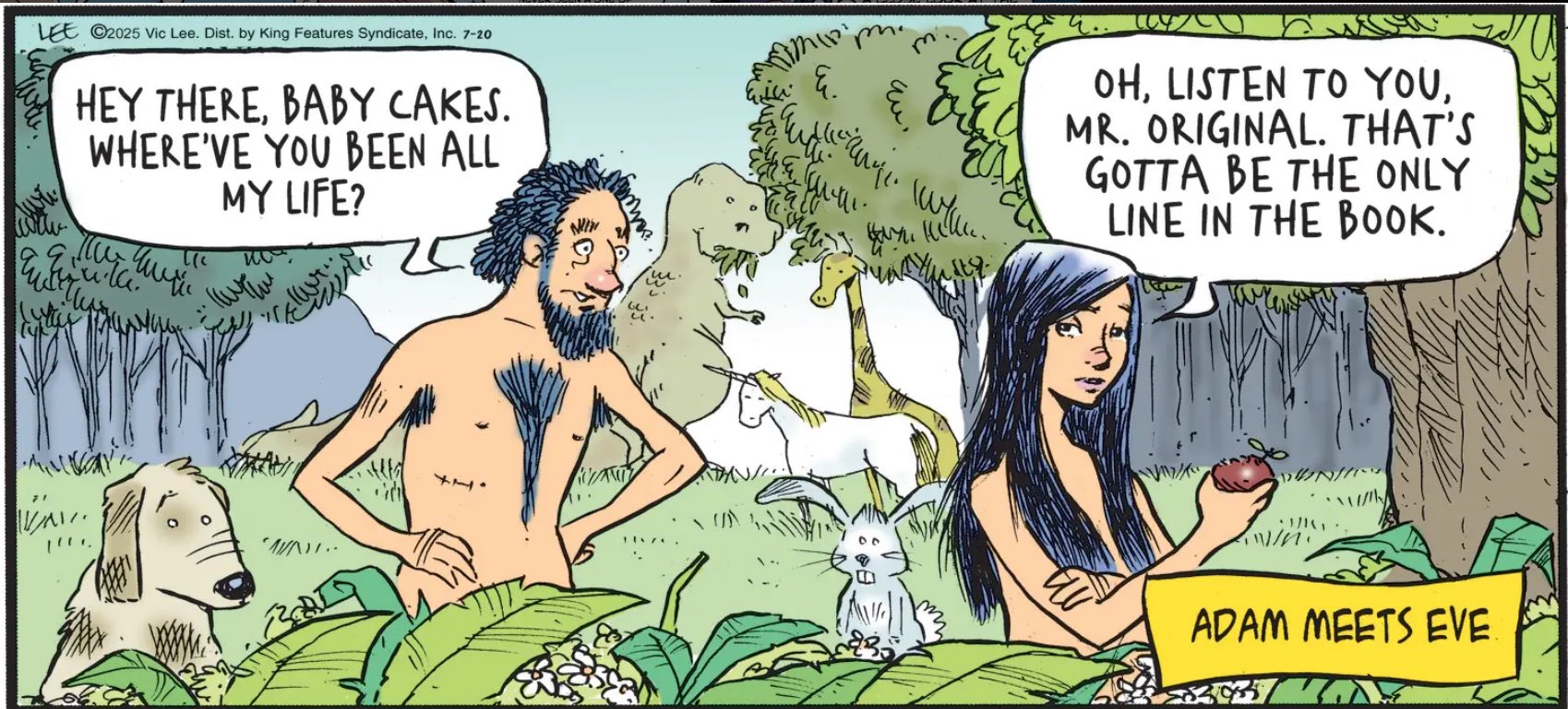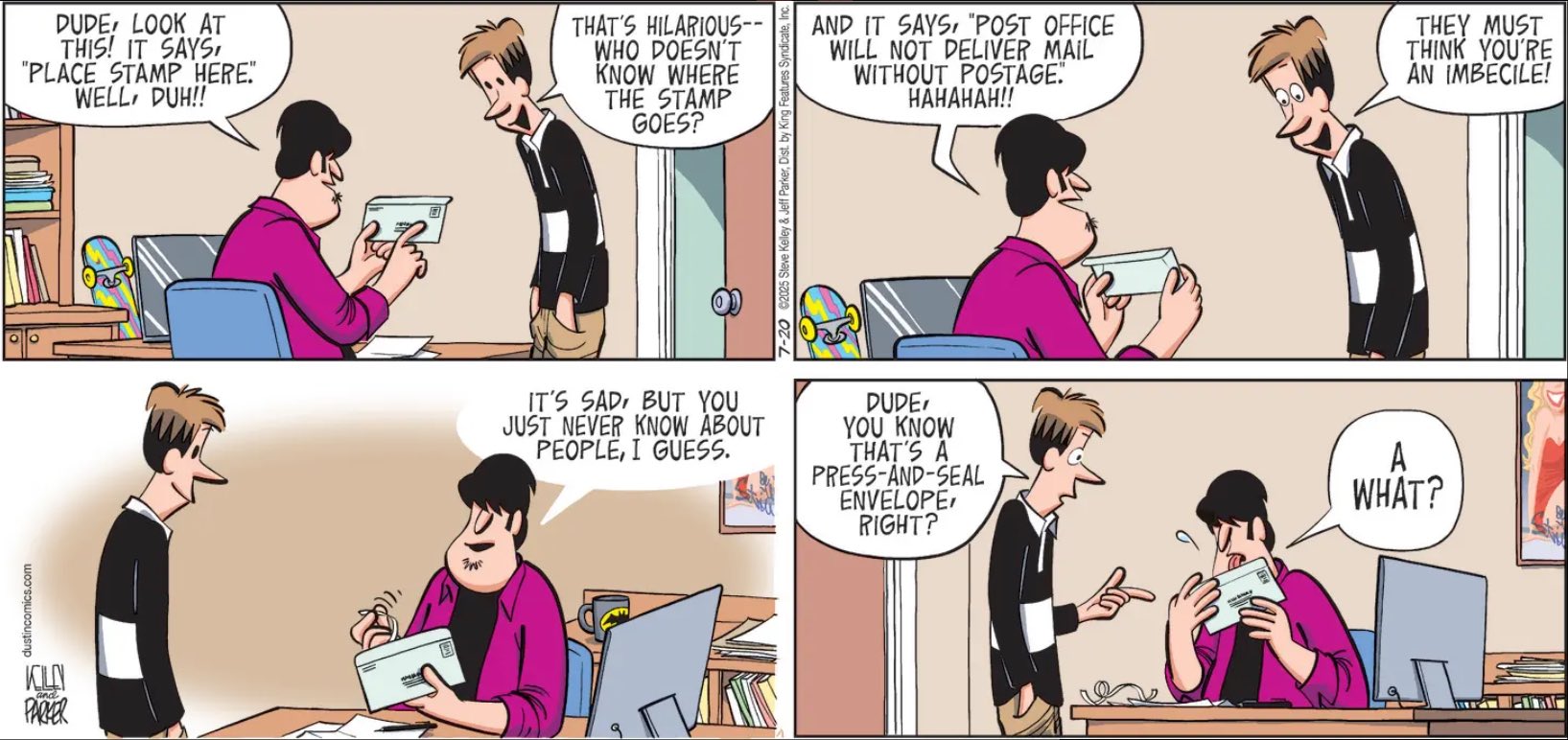Old age, youth, the past, the present, etc.
Post Content
Heathcliff, 7/20/25

I’m a little obsessed with the tiny fish saying “Welcome to the club!” to Jaws. (Side note: Do we agree that the shark from Jaws is named “Jaws”? I hadn’t really thought about it until I started writing this post but now I feel very strongly about it.) I guess the fish is the representative of the entire Heathcliff universe, which itself turned 50 a couple years ago, and is acknowledging on behalf of his mostly land-based comrades that a fellow aquatic character has hit the same milestone. That said, it feels a little off because the Heathcliff characters are perpetually alive and keeping up their wacky antics and you can imagine them knowing at some level that they’ve existed for 50 years, whereas Jaws dies at the end of Jaws (sorry for the spoiler, but as noted this movie is 50 years old now, c’mon). I know there are more Jaws movies but those have different sharks in them. Are those sharks also named “Jaws”? I gotta think about that one, I’ll get back to you on it.
Hagar the Horrible, 7/20/25

Some really harrowing throwaway panels here: they transform a simple strip about Hagar inventing the movie theater freestyle machine so he can get super blotto into one that informs us that (a) somehow beat generation genius/weirdo William S. Burroughs had his strangest novel adapted into a play more than 1,000 years before he wrote it and (b) the canonically illiterate Hagar can’t parse out the word “naked”, but he can read “lunch.”
Pardon My Planet, 7/20/25

Gotta say that I’m impressed that this panel carefully avoided showing us whether or not Adam and Eve had navels, thus avoiding theological controversy, but dared to ask the question “What would Adam’s whole body hair situation have been?” and came up with an answer that’s more fucked up than any of us could’ve dreamed of.
Dustin, 7/20/25

Ha ha, just a couple of Gen Z dudes talking about mailing physical letters, a process they know a lot about from long experience! This strip, which is literally about the differences between young people and old people, demonstrates once again that it has its finger on the pulse of what young people know and do.

